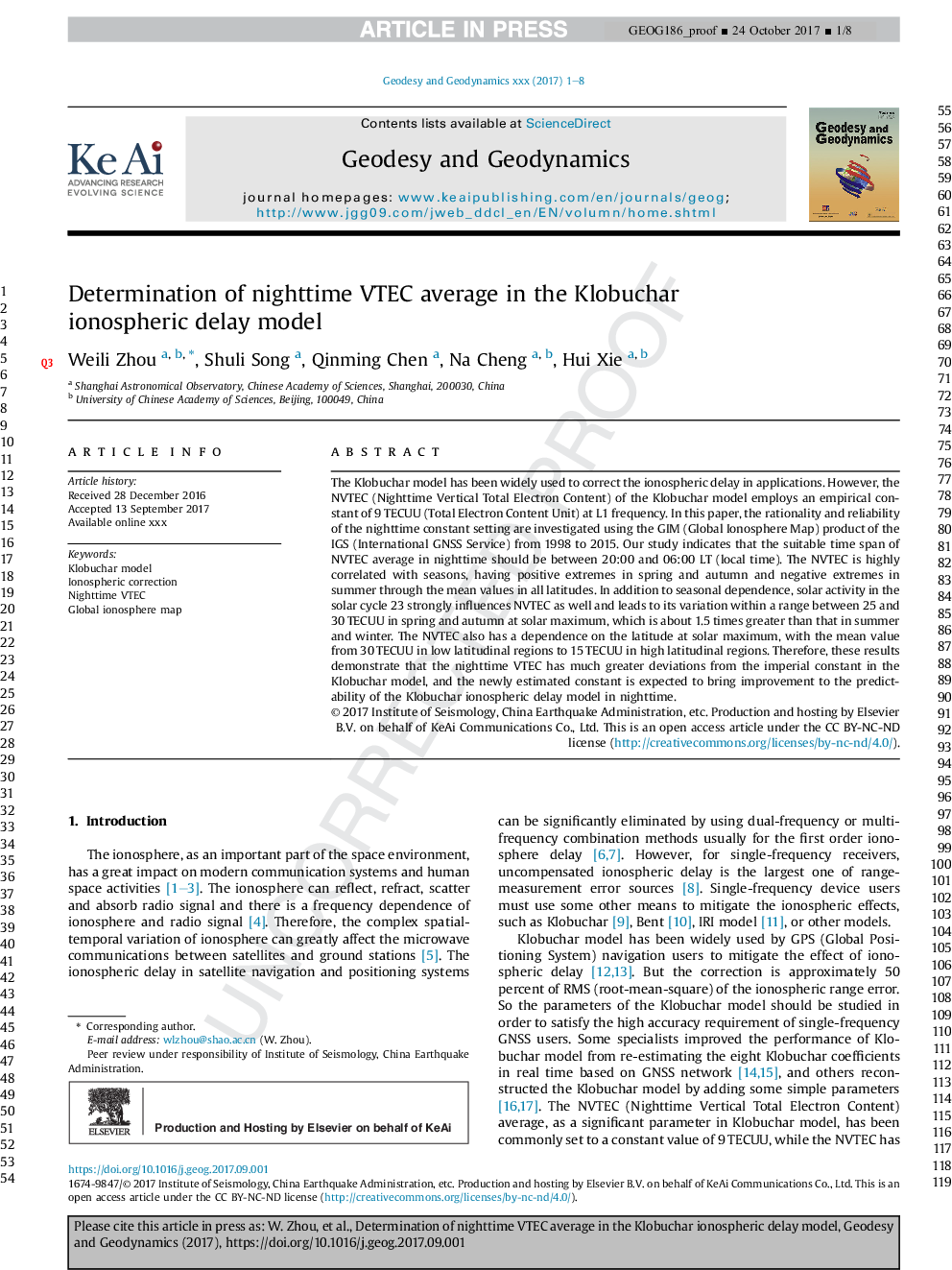| Article ID | Journal | Published Year | Pages | File Type |
|---|---|---|---|---|
| 8907868 | Geodesy and Geodynamics | 2018 | 8 Pages |
Abstract
The Klobuchar model has been widely used to correct the ionospheric delay in applications. However, the NVTEC (Nighttime Vertical Total Electron Content) of the Klobuchar model employs an empirical constant of 9â¯TECU (Total Electron Content Unit) at L1 frequency. In this paper, the rationality and reliability of the nighttime constant setting are investigated using the GIM (Global Ionosphere Map) product of the IGS (International GNSS Service) from 1998 to 2015. Our study indicates that the suitable time span of NVTEC average in nighttime should be between 20:00 and 06:00 LT (local time). The NVTEC is highly correlated with seasons, having positive extremes in spring and autumn and negative extremes in summer through the mean values in all latitudes. In addition to seasonal dependence, solar activity in the solar cycle 23 strongly influences NVTEC as well and leads to its variation within a range between 25 and 30â¯TECU in spring and autumn at solar maximum, which is about 1.5 times greater than that in summer and winter. The NVTEC also has a dependence on the latitude at solar maximum, with the mean value from 30â¯TECU in low latitudinal regions to 15â¯TECU in high latitudinal regions. Therefore, these results demonstrate that the nighttime VTEC has much greater deviations from the imperial constant in the Klobuchar model, and the newly estimated constant is expected to bring improvement to the predictability of the Klobuchar ionospheric delay model in nighttime.
Keywords
Related Topics
Physical Sciences and Engineering
Earth and Planetary Sciences
Earth-Surface Processes
Authors
Weili Zhou, Shuli Song, Qinming Chen, Na Cheng, Hui Xie,
